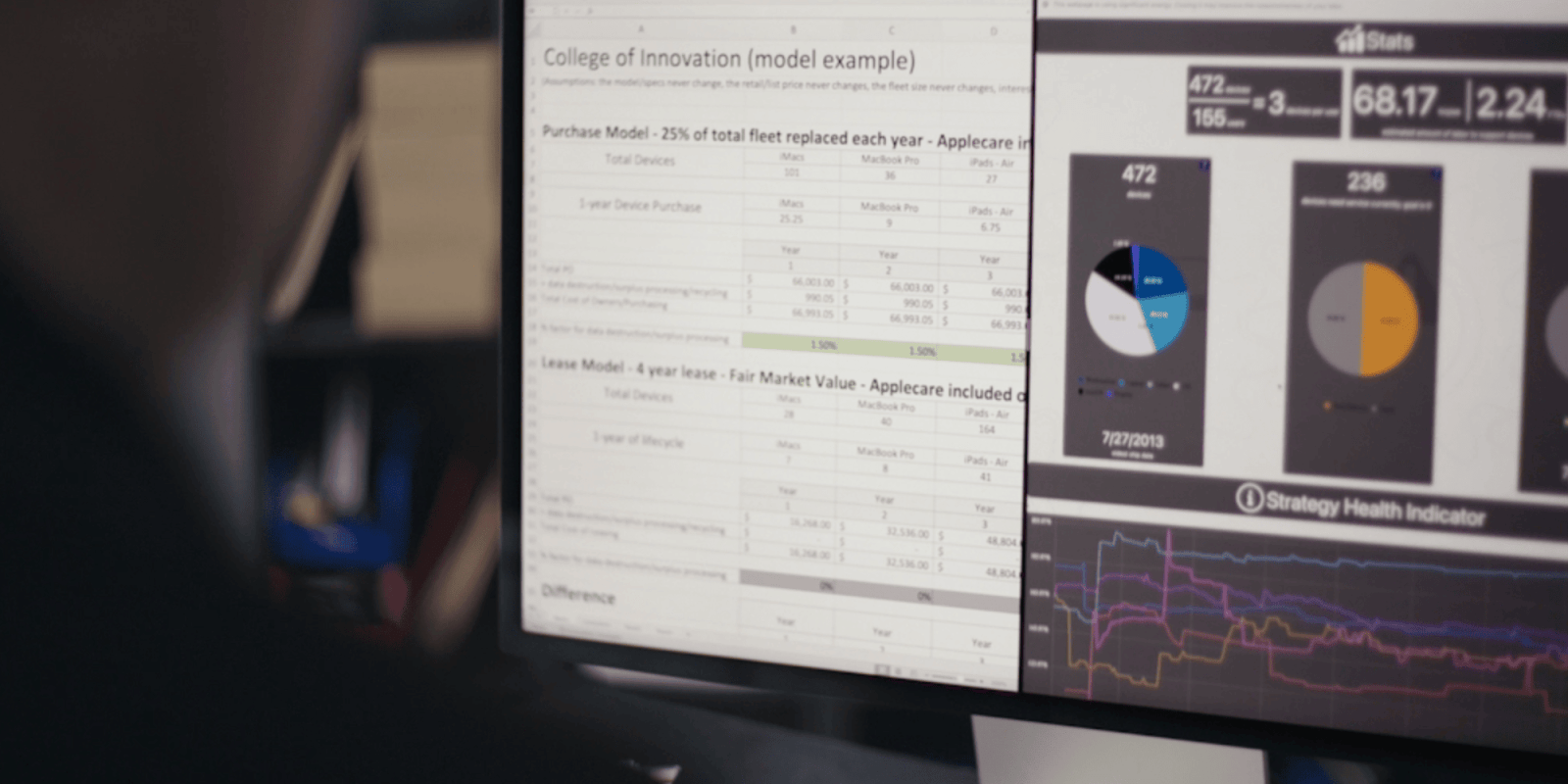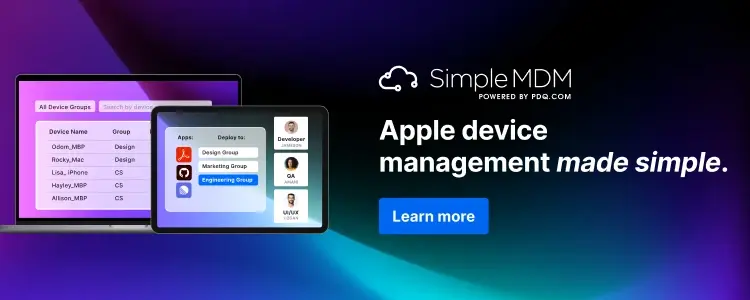
Apple at Work is brought to you by SimpleMDM: Check out SimpleMDM and discover the limitless possibilities of SimpleMDM’s powerful API. Whether you want to automate tasks or integrate SimpleMDM into your existing infrastructure, the API offers the flexibility you need to gain full programmatic access to your account and devices.
Apple recently published a case study on The University of Kentucky’s Apple deployment, and I believe that it’s worth highlighting. In it, we find “PC-guy” Bill Adams looking at how he crunched the numbers and saw a great return on investment with iPad and Mac for the Wildcats. I believe this trend is a major shift that is happening in IT right now as staffing and total cost of ownership become more important than raw hardware costs.
About Apple @ Work: Bradley Chambers managed an enterprise IT network from 2009 to 2021. Through his experience deploying and managing firewalls, switches, a mobile device management system, enterprise grade Wi-Fi, 100s of Macs, and 100s of iPads, Bradley will highlight ways in which Apple IT managers deploy Apple devices, build networks to support them, train users, stories from the trenches of IT management, and ways Apple could improve its products for IT departments.

As I said, Adams is/was a “PC-guy,” like many IT professionals. His mindset changed when he launched a study to take a holistic look at the total cost of ownership of the 30,000+ devices hitting the university’s network. After two years, Adams came to a conclusion that surprised him, but shouldn’t do anyone who is reading this article: The data showed that Apple is easier and cheaper to support for IT teams.
As part of the study, Adams found that Macs are twice as efficient as PC-based computers to support, and iPads are 10 times more efficient to manage than other tablet devices.
“One employee managing 120 Surface tablets can keep over 1,200 iPads running over the same period of time,” Adams says. “And that shocked us! Most people only see the purchase price, but they don’t consider the total cost of ownership. Apple more than pays off during the life cycle of its devices.”
The most expensive part of technology ownership?
One of the biggest challenges going on for IT teams is staffing concerns. Digital transformation has caused everything to go online. Think about your workplace, for example. How much of what you do doesn’t involve the IT team in some way? Especially in a remote/hybrid environment, you’re probably not touching a pencil and paper for anything. So essentially, everything involves IT. The reality is that IT is never done with a project, either. If you roll out a new system for X, the IT team has to manage and maintain that system forever.
So let’s just throw some numbers around for kicks. Let’s say that a company can deploy a PC for $600, but the M2 MacBook Air the company is looking at is around $1200. The “bean counter” in you might say that the MacBook Air is double the cost. What you aren’t considering is the cost of deploying, maintaining, and decommissioning the device over a three or four-year period. The reality is that when you include the labor cost, Apple is going to win. Apple products are easier and less expensive to maintain from a TCO point of view. If you think about technology like a construction project, it’ll make a lot of sense for you. This is the mindset I had to start considering a few years back. I had always known Apple products were better for users, but realizing they are less expensive is a mindset shift.
Materials to build a house
- Material company A: $100,000
- Material company B: $120,000
Labor to build a house and maintain it
- Company A: $80,000
- Company B: $40,000
Total cost of ownership
- Option A: $180,000
- Option B: $160,000
This is what IT teams are finding out. Staffing is a concern, so buying equipment that is going to require less staff to maintain is a critical decision. It’s no longer just looking at the per-device equipment charge. Teams are now considering the total cost of buying, deploying, and maintaining the device. Adams found that Apple technology, compared to the alternatives, has reduced the University of Kentucky’s IT labor costs by over 60%. If you’re a business owner, what would reduce your labor cost by 60% do for your bottom line? When Adams is putting together a yearly budget, he’s certainly considering the TOTAL budget, so if a computer that costs most requires fewer labor hours to service, it just makes sense.
Wrap-up
The data here isn’t surprising to me today. I know how easy Apple has made it to deploy and service its devices. The purchase price is something to consider but to accurately make the decision on which devices are best, the labor involved is something to consider. Apple’s investment in zero-touch deployment, best-in-class performance with Apple Silicon, and security that is unmatched for the enterprise, makes Apple the fastest and most desirable horse for the enterprise – both for IT and end users.
Most people only see the purchase price, but they don’t consider the total cost of ownership. Apple devices cut our IT labor costs in half.
Bill Adams, University of Kentucky
As you’re making your IT plans for next year, if you aren’t looking at the repair costs and help desk tickets when considering Mac vs PC or iPad vs another tablet, you aren’t getting the full picture.
FTC: We use income earning auto affiliate links. More.









Comments